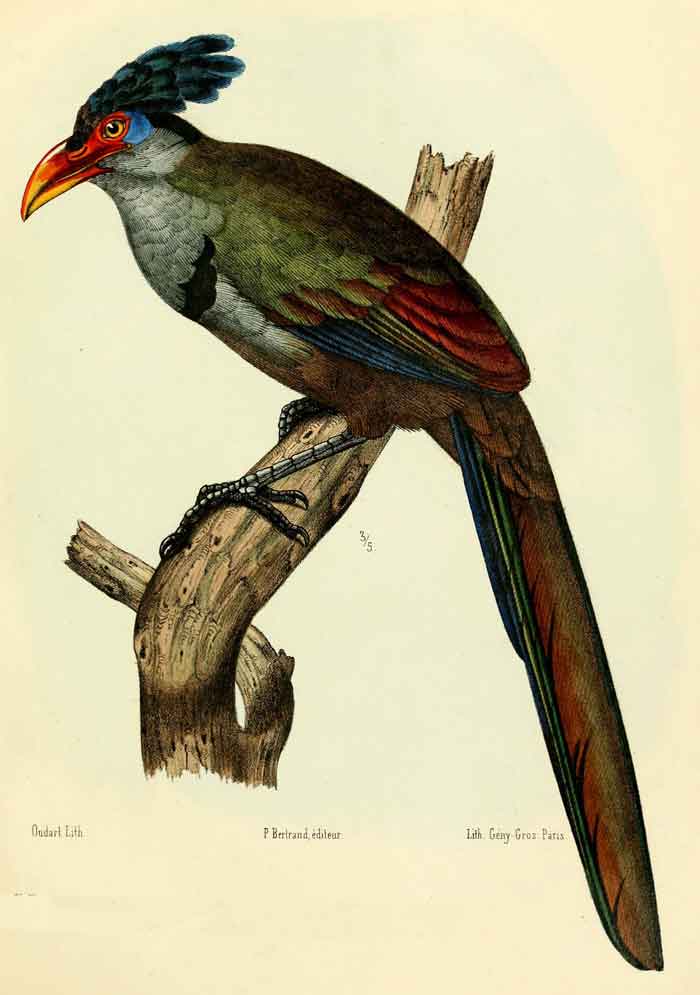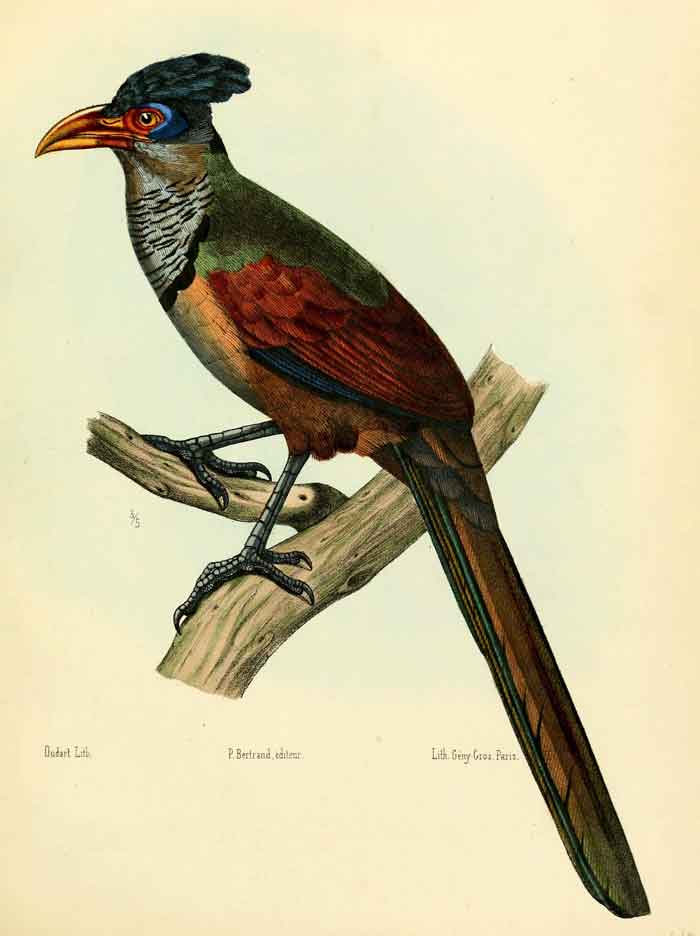
Superregnum: Eukaryota
Cladus: Unikonta
Cladus: Opisthokonta
Cladus: Holozoa
Regnum: Animalia
Subregnum: Eumetazoa
Cladus: Bilateria
Cladus: Nephrozoa
Superphylum: Deuterostomia
Phylum: Chordata
Subphylum: Vertebrata
Infraphylum: Gnathostomata
Megaclassis: Osteichthyes
Cladus: Sarcopterygii
Cladus: Rhipidistia
Cladus: Tetrapodomorpha
Cladus: Eotetrapodiformes
Cladus: Elpistostegalia
Superclassis: Tetrapoda
Cladus: Reptiliomorpha
Cladus: Amniota
Classis: Reptilia
Cladus: Eureptilia
Cladus: Romeriida
Subclassis: Diapsida
Cladus: Sauria
Infraclassis: Archosauromorpha
Cladus: Crurotarsi
Divisio: Archosauria
Cladus: Avemetatarsalia
Cladus: Ornithodira
Subtaxon: Dinosauromorpha
Cladus: Dinosauriformes
Cladus: Dracohors
Cladus: Dinosauria
Ordo: Saurischia
Cladus: Eusaurischia
Subordo: Theropoda
Cladus: Neotheropoda
Cladus: Averostra
Cladus: Tetanurae
Cladus: Avetheropoda
Cladus: Coelurosauria
Cladus: Tyrannoraptora
Cladus: Maniraptoromorpha
Cladus: Maniraptoriformes
Cladus: Maniraptora
Cladus: Pennaraptora
Cladus: Paraves
Cladus: Eumaniraptora
Cladus: Avialae
Infraclassis: Aves
Cladus: Avebrevicauda
Cladus: Pygostylia
Cladus: Ornithothoraces
Cladus: Ornithuromorpha
Cladus: Carinatae
Parvclassis: Neornithes
Cohors: Neognathae
Cladus: Neoaves
Ordo: Cuculiformes
Familia: Cuculidae
Genus: Neomorphus
Species: Neomorphus pucheranii
Subspecies: N. p. lepidophanes – N. p. pucheraniiName
Neomorphus pucheranii (Deville, 1851)
Type locality: "l'Ucayale et l'Amazone" = Rio Yaguas, Peru.
Synonyms
Cultrides pucheranii (protonym)

References
Deville, É. 1851. Note sur quatre espèces nouvelles d'oiseaux provenant de l'expédition de M. Castelnau; le Cornurus Weddellii, C. jugularis, C. Luciani et Cultrides Pucheranii. Revue et Magasin de Zoologie Pure et Appliquée 2(3): 209-213 BHL Reference page. p. 211 BHL
Vernacular names
čeština: Kukačka peruánská
English: Red-billed Ground Cuckoo
español: Cuco-hormiguero Piquirrojo
français: Géocoucou de Pucheran
português: Jacu-estalo-de-bico-vermelho
Türkçe: Kızıl gagalı yer guguğu
The red-billed ground cuckoo (Neomorphus pucheranii) is a species of cuckoo in the tribe Neomorphini of subfamily Crotophaginae. It is found in Brazil, Colombia, Peru, and possibly Ecuador.[2][3][4]
Taxonomy and systematics
The red-billed ground-cuckoo has two subspecies, the nominate N. p. pucheranii and N. p. lepidophanes.[2]
Description
The red-billed ground cuckoo is 43 to 55 cm (17 to 22 in) long, about half of which is its tail. One male weighed 330 g (12 oz). Adults have a heavy decurved red or orange bill tipped with green or yellow. Males and females of each subspecies have the same plumage. Adults of the nominate subspecies have a dark bluish black crown and shaggy crest with a purple gloss. Their nape and back are olive brown and the rump brown with a bronzy green gloss. Their tail is dark chestnut with an olive green gloss on the upperside of the central feathers. Their wings are mostly rufous; the outer primaries are black with a violet blue gloss. Their face is ashy gray with red lores, red skin around the eye, and bright blue skin behind the eye. Their throat is plain ashy gray, the breast ashy gray with faint black edges to the feathers and a black band below it. Their belly is buffy to light gray and the flanks and undertail coverts dark brownish gray. Juveniles have brown upperparts without gloss, a blackish crest, purplish chestnut wings, black throat and chest, and a brown belly.[5]
Adults of subspecies N. p. lepidophanes are similar, but with a clay-colored breast and belly rather than buffy to light gray. Their breast feathers appear more scaled as well.[5]
Distribution and habitat
The red-billed ground cuckoo is a bird of the upper Amazon basin. The nominate subspecies is found in eastern Peru and western Brazil north of the Amazon River. A sight record in Ecuador leads the South American Classification Committee of the American Ornithological Society to treat it as hypothetical in that country. That committee has not evaluated another sight record from Colombia. Subspecies N. p. lepidophanes is also found in eastern Peru and western Brazil but south of the Amazon. The species inhabits moist lowland evergreen forest, usually that on somewhat hilly terrain with well-drained soil at elevations up to 700 m (2,300 ft).[5]
Behavior
Movement
The red-billed ground cuckoo is a year-round resident throughout its range.[5]
Locomotion
The red-billed ground cuckoo is almost exclusively terrestrial, though it may fly low to the ground or into a tree to escape a predator or hop to low branches. It mostly walks or runs on the forest floor and makes leaps to catch prey.[5]
Feeding
The red-billed ground cuckoo's diet has not been extensively studied but is mostly insects. It also includes other arthropods; small vertebrates like lizards, amphibians, and small birds; and sometimes fruits. It follows army ant swarms and peccaries to catch prey fleeing from them, and monkey troops to feed on fallen fruits.[5]
Breeding
Almost nothing is known about the red-billed ground cuckoo's breeding phenology and its nest has not been described. In 1855 an observer noted a nest with two eggs being incubated by both adults.[5]
Dickcissel male perched on a metal pole singing, with neck stretched and beak open.
Songs and calls
Listen to red-billed ground cuckoo on xeno-canto
Vocal and non-vocal sounds
The red-billed ground cuckoo's song is "a short (1 sec), deep, rising hoot in a series of about 1 note/2 sec".[5]
Red-billed ground cuckoos have been observed to mimic peccaries acoustically, perhaps for two reasons. Peccaries are able to defend their herd from predators, so mimicking peccaries would trick predators into believing that peccaries are near. Doing so may also benefit both species by warning the other of nearby predators.[6]
Status
The IUCN has assessed the red-billed ground cuckoo as being of Least Concern. It has a very large range, and though its population size is not known it is believed to be stable. No immediate threats have been identified.[1] "However, the reliance of Red-billed Ground-Cuckoo on tropical evergreen forest suggests that it could be susceptible to loss of habitat through deforestation and forest fragmentation."[5]
References
BirdLife International (2016). "Red-billed Ground-cuckoo Neomorphus pucheranii". IUCN Red List of Threatened Species. 2016: e.T22684483A93032079. doi:10.2305/IUCN.UK.2016-3.RLTS.T22684483A93032079.en. Retrieved 24 September 2022.
Gill, F.; Donsker, D.; Rasmussen, P., eds. (August 2022). "Turacos, bustards, cuckoos, mesites, sandgrouse". IOC World Bird List. v 12.2. Retrieved August 8, 2022.
HBW and BirdLife International (2021) Handbook of the Birds of the World and BirdLife International digital checklist of the birds of the world. Version 6. Available at: http://datazone.birdlife.org/userfiles/file/Species/Taxonomy/HBW-BirdLife_Checklist_v6_Dec21.zip retrieved August 7, 2022
Remsen, J. V., Jr., J. I. Areta, E. Bonaccorso, S. Claramunt, A. Jaramillo, D. F. Lane, J. F. Pacheco, M. B. Robbins, F. G. Stiles, and K. J. Zimmer. Version 24 July 2022. Species Lists of Birds for South American Countries and Territories. https://www.museum.lsu.edu/~Remsen/SACCCountryLists.htm retrieved July 24, 2022
Hughes, J. M. (2020). Red-billed Ground-Cuckoo (Neomorphus pucheranii), version 1.0. In Birds of the World (T. S. Schulenberg, Editor). Cornell Lab of Ornithology, Ithaca, NY, USA. https://doi.org/10.2173/bow.rbgcuc1.01 retrieved September 24, 2022
Amral, F. R. (2017). "Bluffing in the forest: Neotropical neomorphus ground‐cuckoos and peccaries in a possible case of acoustic mimicry". Journal of Avian Biology. 48 (11): 1471–1474. doi:10.1111/jav.01266.
Retrieved from "http://en.wikipedia.org/"
All text is available under the terms of the GNU Free Documentation License

